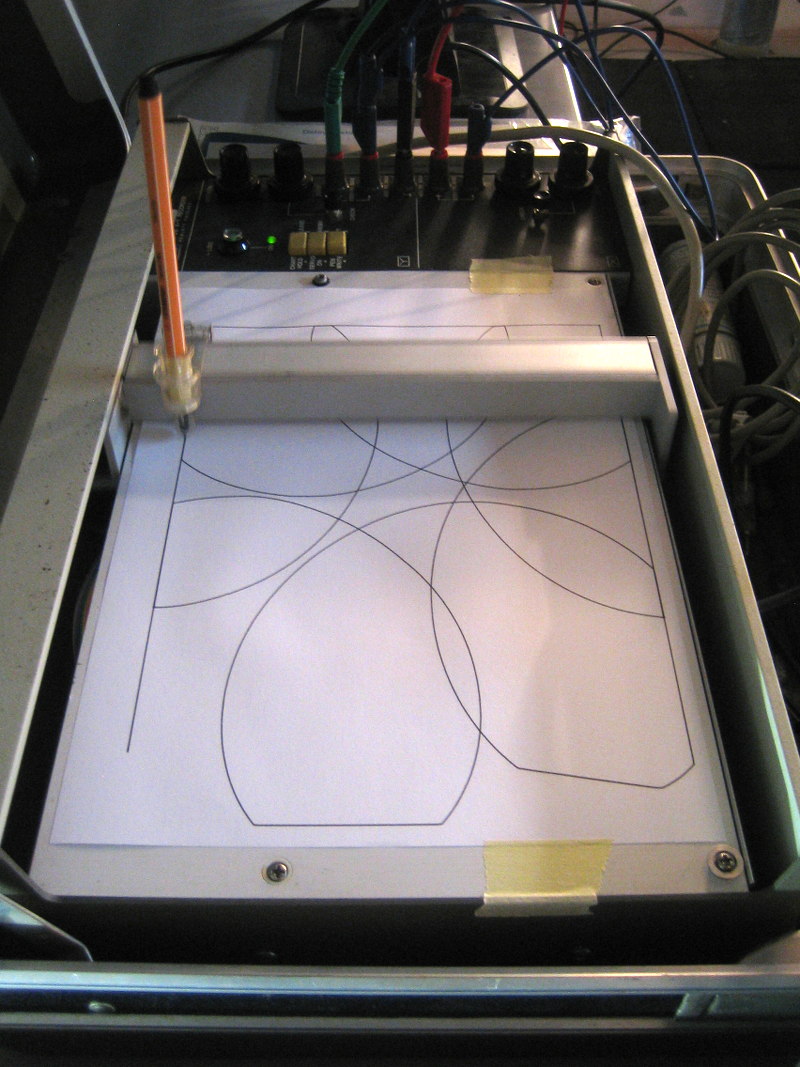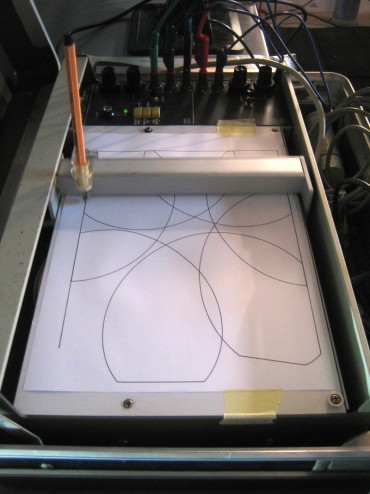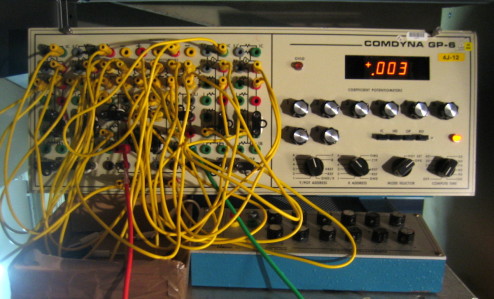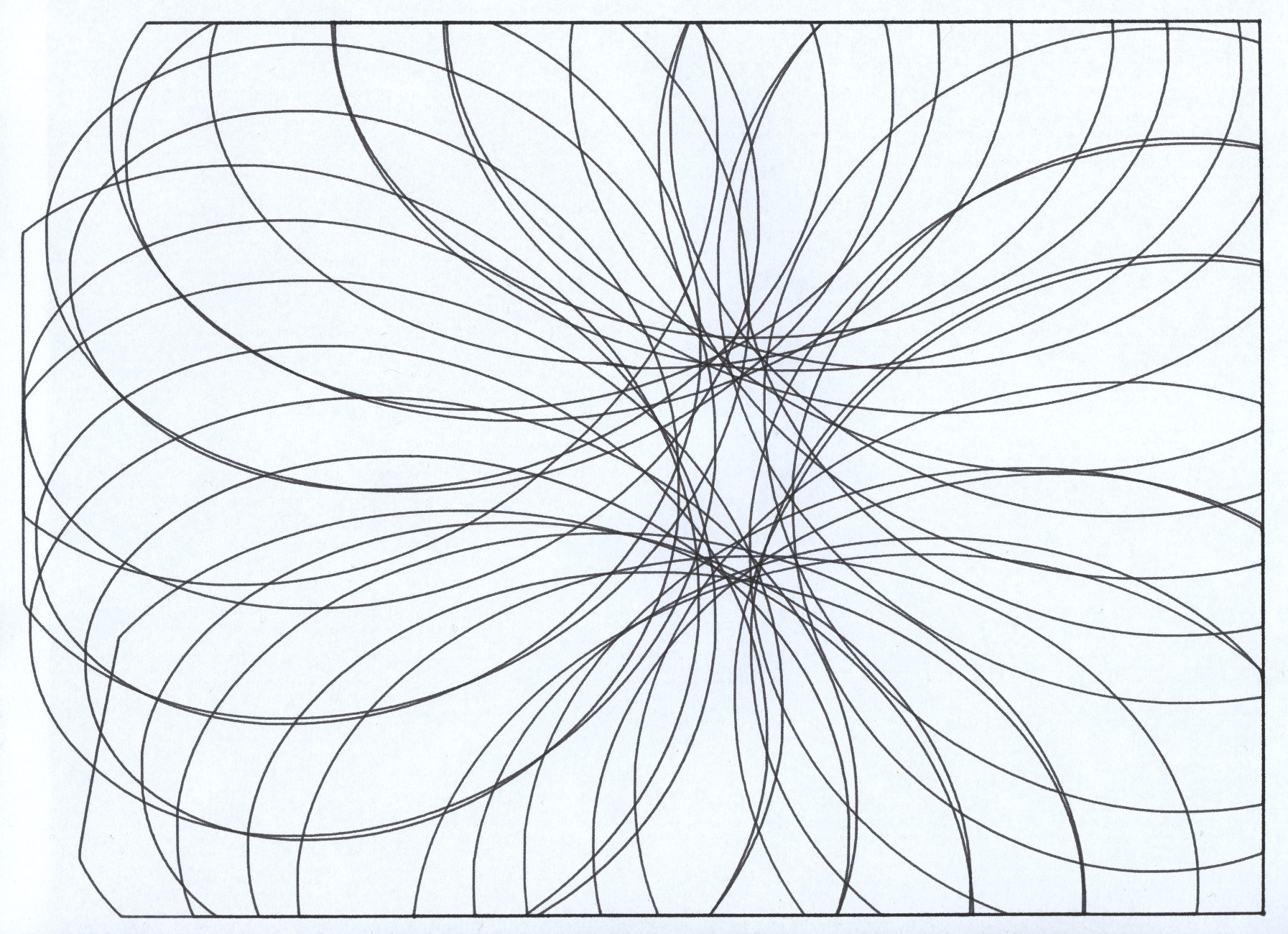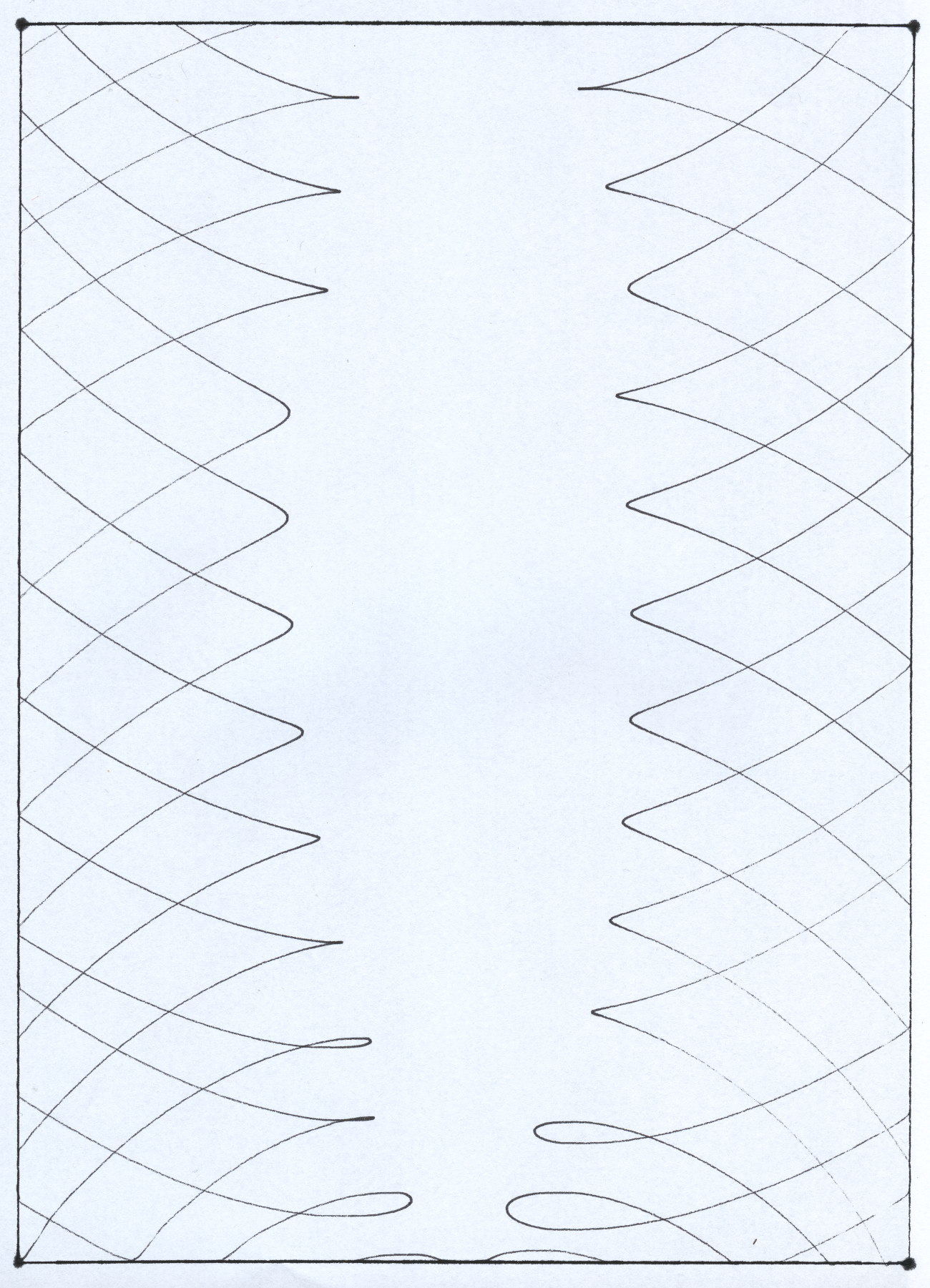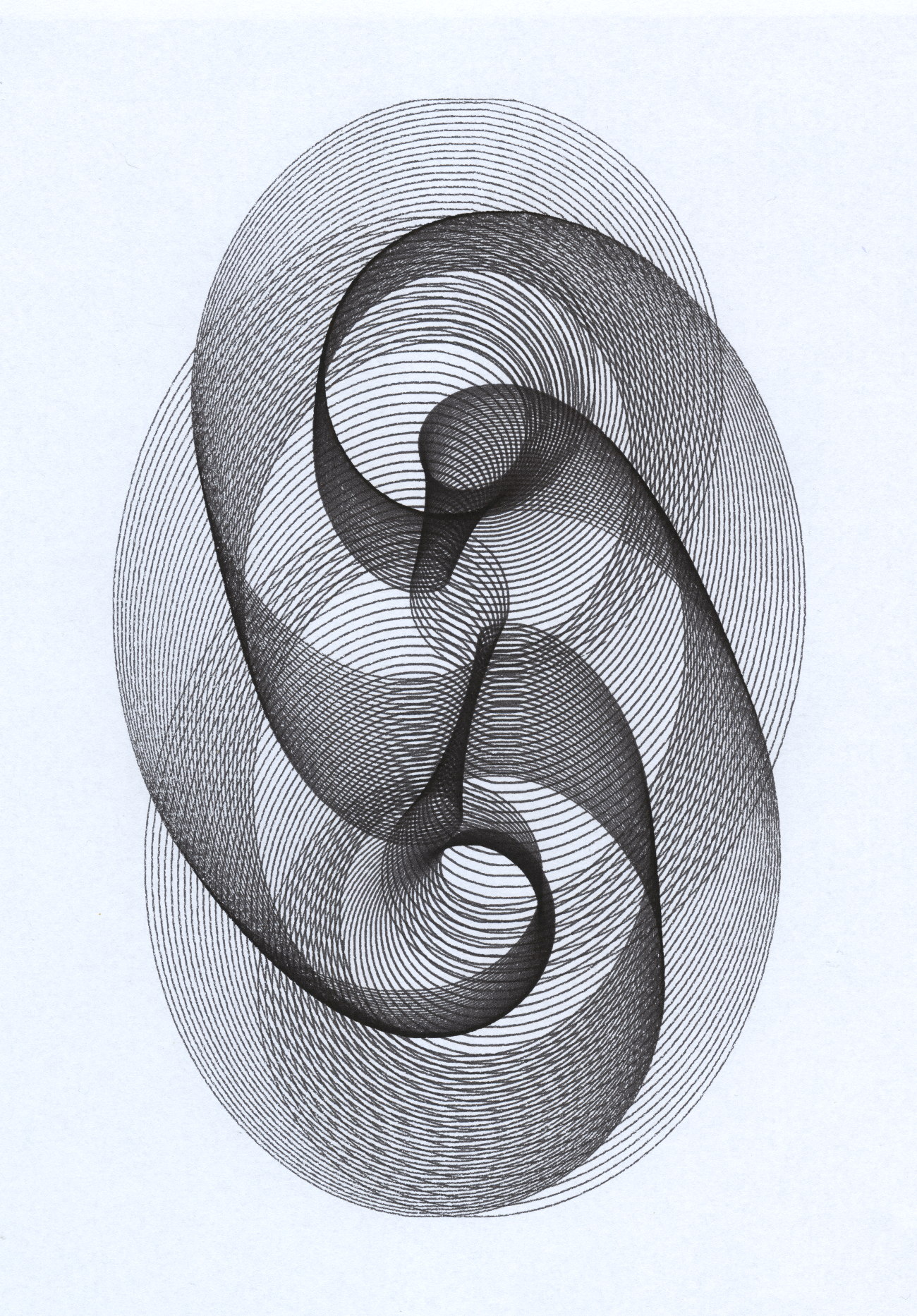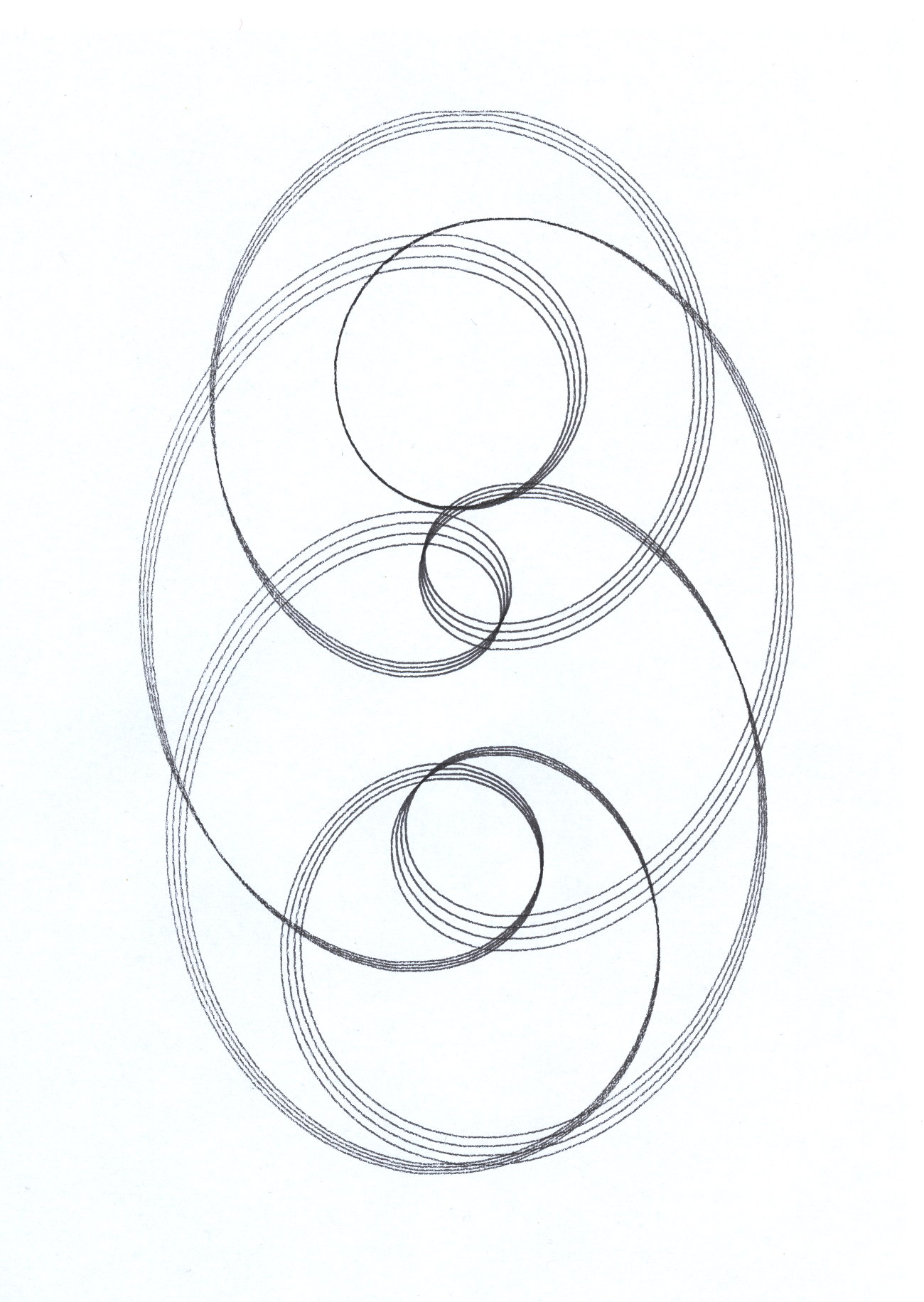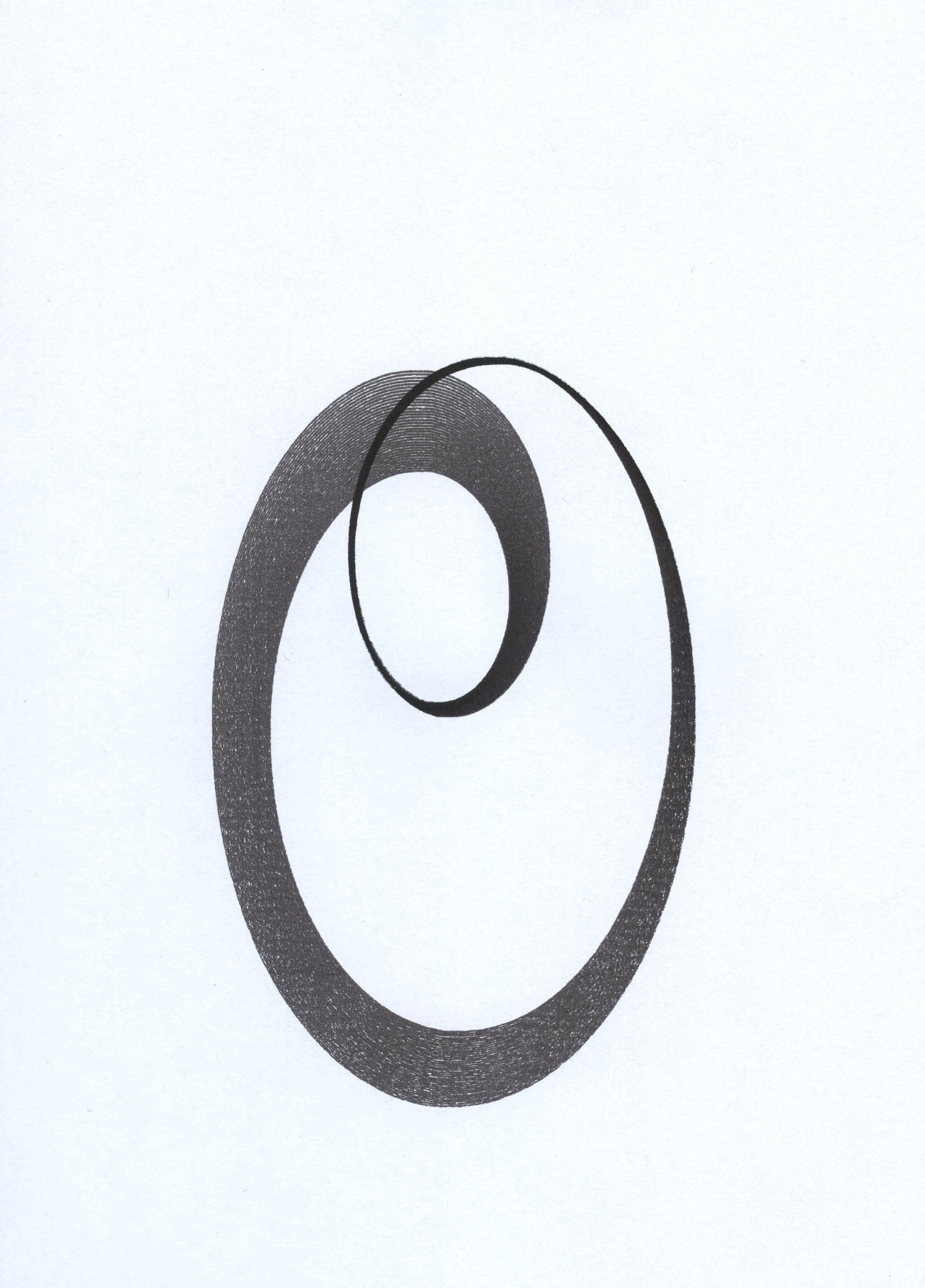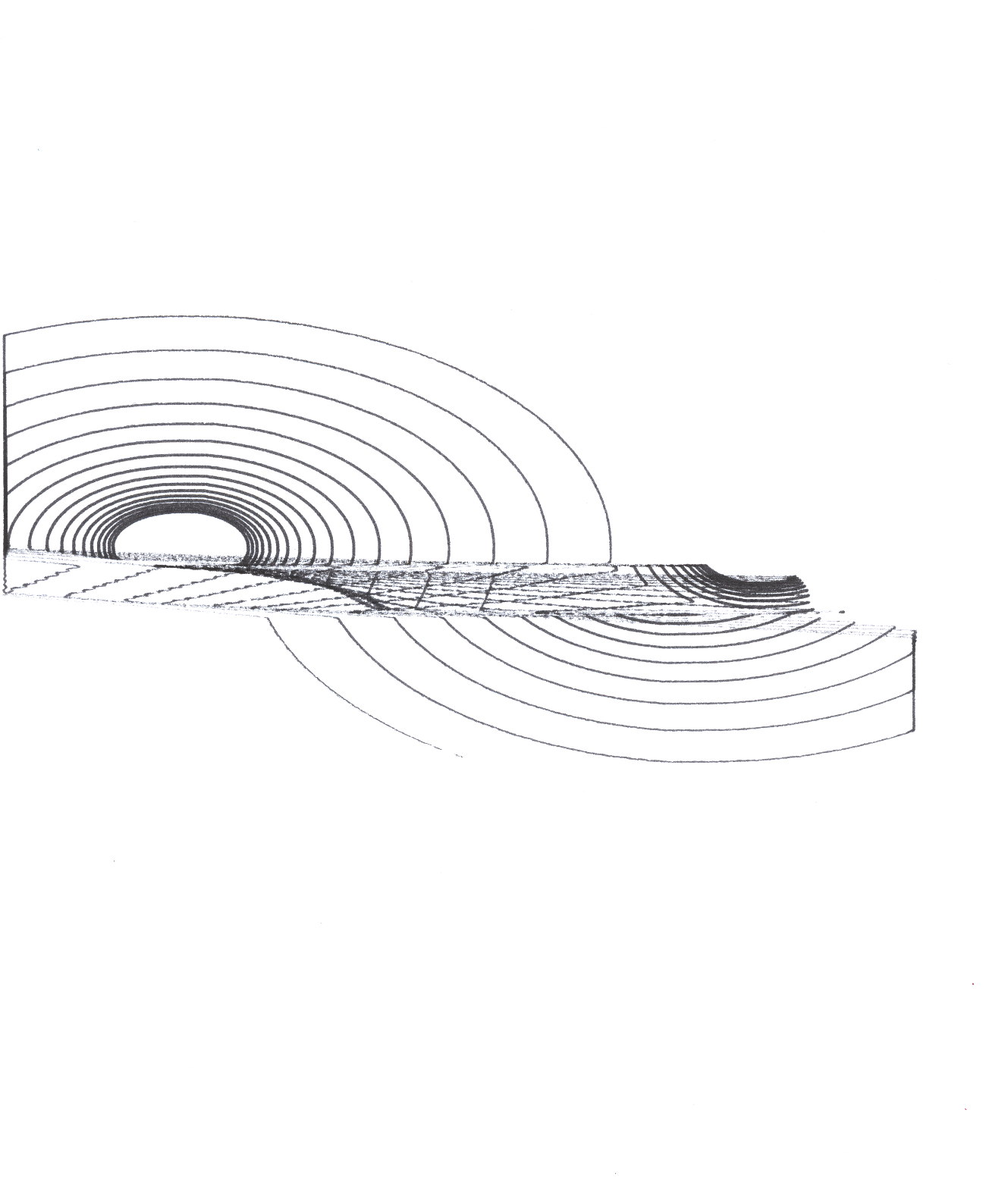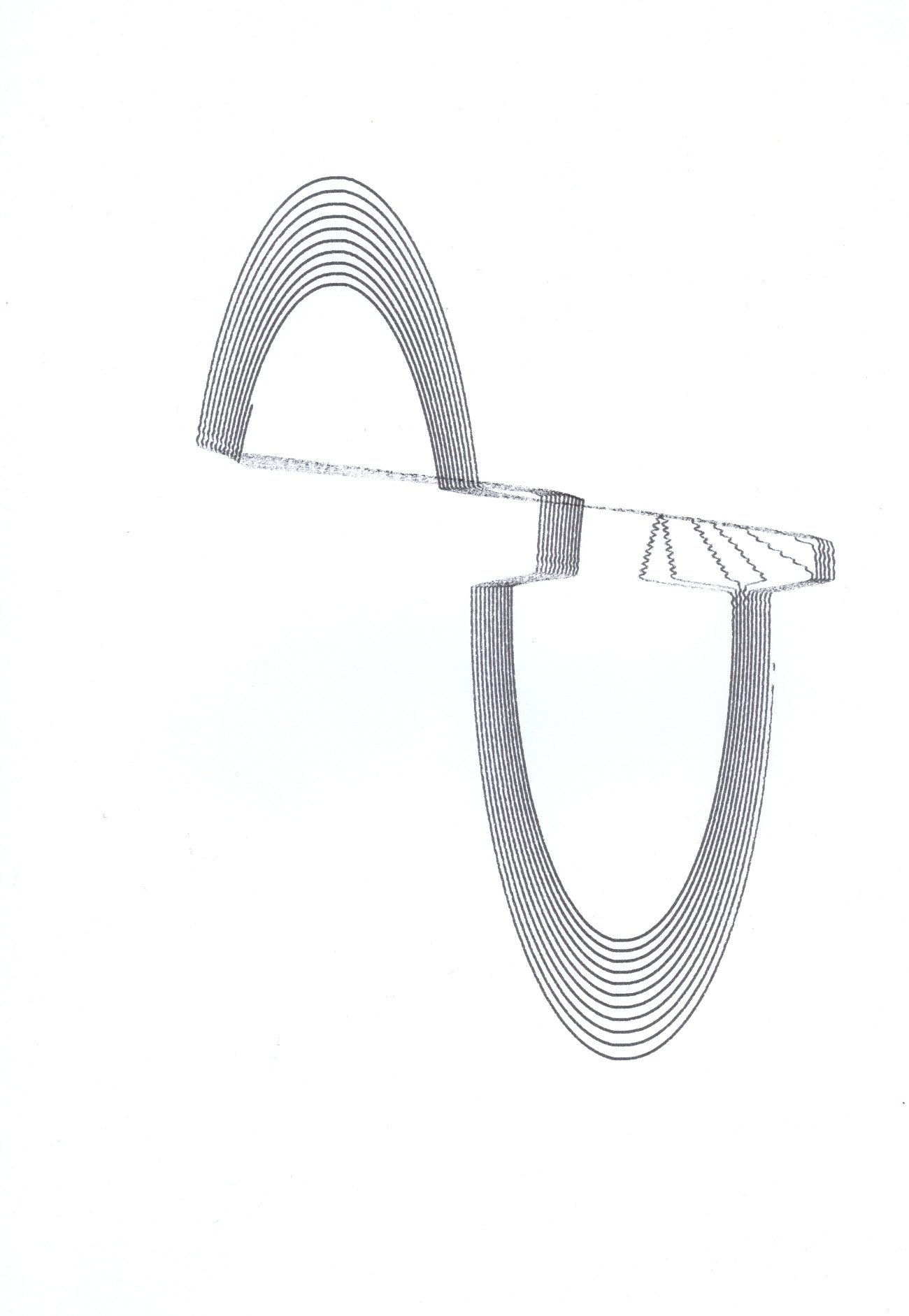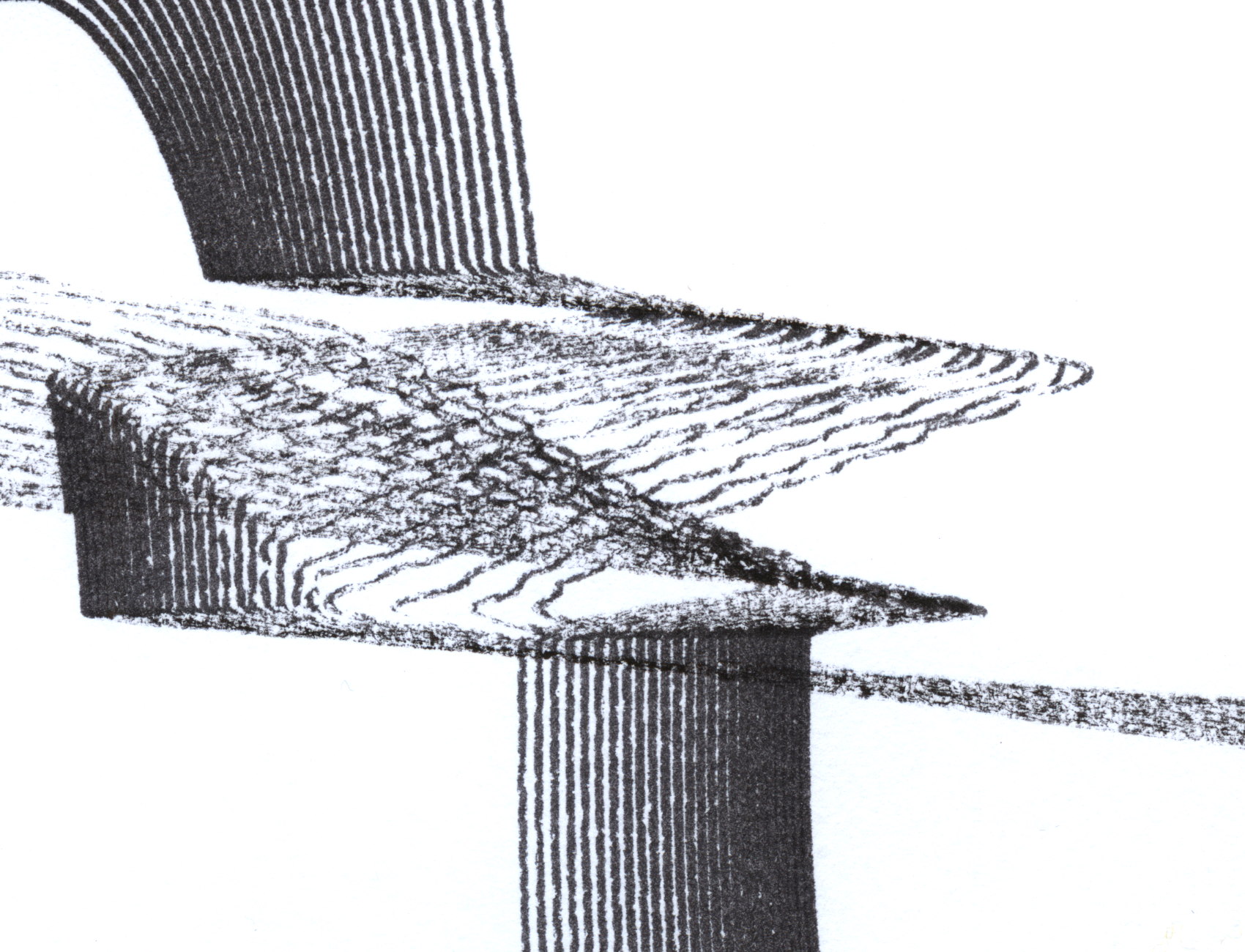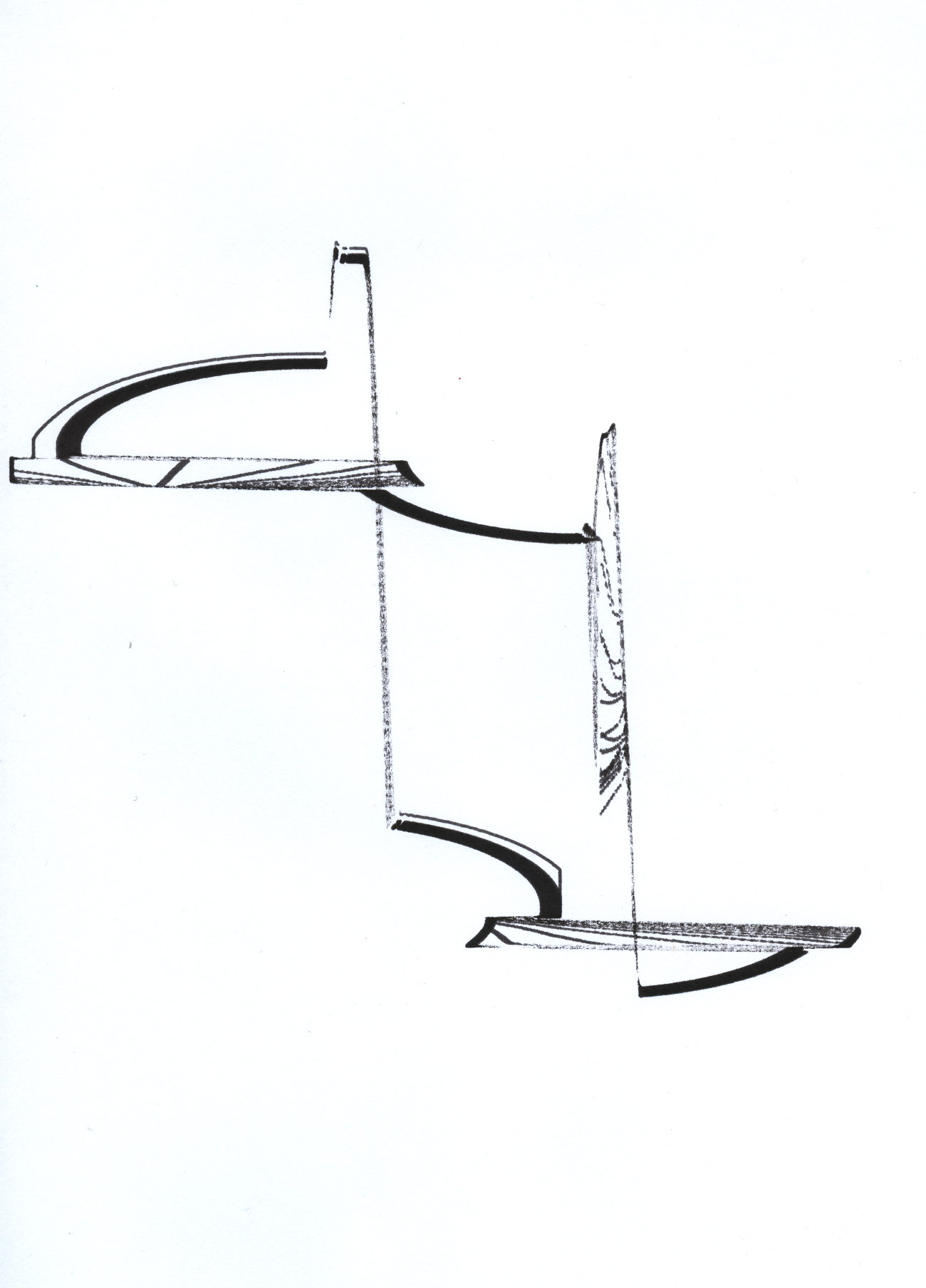As an unexpected side-track of my current interest in analog computing, I found myself today making analog ‘programs’ to be drawn on a XY-recorder I recently bought. XY-recorders are the direct precursors of plotters, which are themselves the direct precursors of the raster printers that are now the most common way to print a calculated image. Where modern printers print pixels, plotters and XY-recorders draw lines, which means that images are encoded as a set of coordinates. And where plotters receive these coordinates in the form of digital information, the XY-recorder is completely analog; it has a signal input for the movement of the pen along the X-axis, and another input for the movement along the Y-axis.
As part of my research for what probably will become #59, I have been playing around for some time now with this small analog computer, a Comdyna GP-6, that was built for use in university labs, mostly as a teaching aid. It is a machine that was designed in 1968 and that has continuously been in production until 2008, without any modification, which is remarkable in a technological landscape where the average life span of many devices seems to be three years. I’ve been experimenting with ways to use it to control video signals, and at the moment I am building my own analog computer inspired by it; one that is larger and that can work at the speeds necessary for high-definition video. More about this later, also about the history of analog computing which is a history that is almost forgotten but very interesting.
One of the features the GP-6 inherited from the ‘classical’ analog computers is that it has two modes of operation: the one I used most until now was the ‘repetitive’ mode, in which calculations are repeated plenty times per second. In this mode, the curves produced can be inspected on an oscilloscope and any changes of parameters are immediately visible. But it also has the ‘slow’ mode of operation that was once the standard, and in which the speeds of the calculations match the capabilities of XY-recorders.
Today it was great to see these devices work together so harmoniously in an activity I had never witnessed before. Also these slow drawing motions turn the attention to aspects of analog computing that are not so evident when you are only working in ‘fast’ real-time with oscilloscopes or video signals; doing this made me think of other possibillities to output the curves calculated by analog computers. One of the striking things when you see these machines in this slow mode of operation, is that the physical movement of the XY-recorder is very graceful in itself, probably due to the many analogies between electronic and physical systems. Depending on the program, the linedrawings produced also have some characteristics that you don’t normally see in synthetic images: because of the speed variations, the lines have a varying quality that is interesting to explore.
At the moment I do not have any plans with these images (do click on them to see bigger versions); making them is an interesting activity and a nice way to further teach myself analog computing. I will explore this further, but also I realize how hard it is to make images that go beyond the lissajous, oscilloscope, spirograph, harmonograph and guilloché images that are already so well known.

